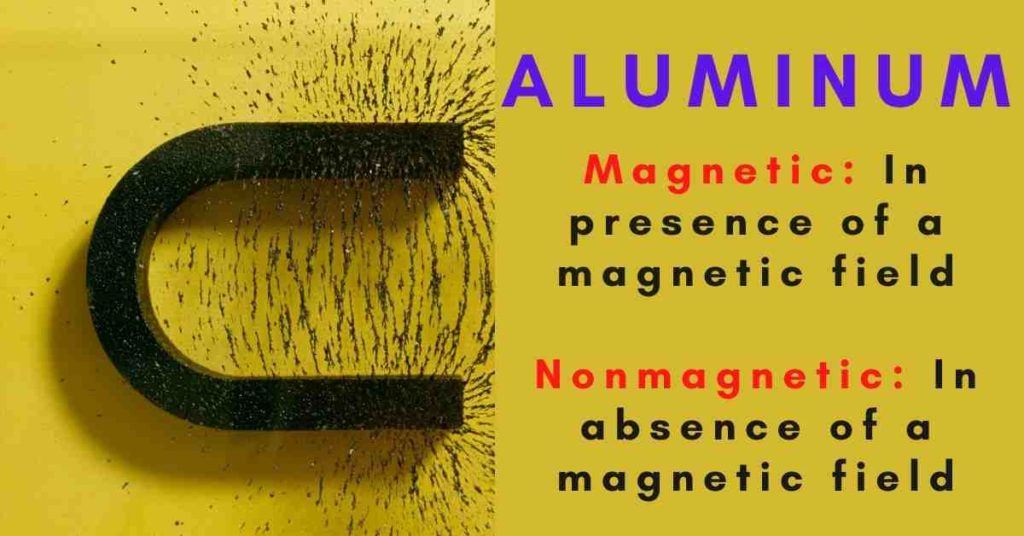The molar mass of aluminum is 26.982 g/mol.
Aluminum (Al) is a metal in Periodic Table Group IIIA with the atomic number 13, an atomic weight of 26.982, and a density of 2.70 g/cm3. It has a melting point of 660 degrees Celsius. Aluminum has a face-centered cubic crystal structure.
The molar mass of an element is the mass in grams of one mole of the element. It is calculated by taking the atomic weight of the element on the periodic table as g/mol.
One mole of Al atoms has a mass in grams that is numerically comparable to the atomic mass of aluminum. According to the periodic table, the atomic mass of aluminum is 26.98.
Hence, 1 mole of Al atoms weighs 26.98 g.

| Name of metal | Aluminum |
| Melting point | 660.3 °C |
| Density | 2.7 g/cm³ |
| Crystal structure | face-centered-cubic crystal structure |
| No of unbonded Electrons | 1 unpaired electron placed in a 3p orbital in its ground state |
| Electronic configuration | 1s22s22p63s23p1 |
| Aluminum molar mass | 26.982 g/mol. |
Table of Contents
The Properties of Aluminium
- Aluminum (Al) is a silvery-white metal with a variety of desirable properties.
- It’s light, harmless (like metal), non-magnetic, and non-sparking.
- Al is not found free in nature, despite its abundance in the earth’s crust.
- Aluminum is a silvery-white metal having a number of advantageous characteristics.
- It is light, nonmagnetic, and nonsparking (just like metal).
- Despite its abundance in the earth’s crust, aluminum is not found free in nature.
- It is simple to form, process, and cast.
Is Aluminum Magnetic?
Aluminum does not attach to magnets in our experience (neither does copper). When exposed to high enough magnetic fields magnetic fields, most things will display some magnetic attraction. However, under normal conditions, aluminum does not appear to be magnetic. To find out more, check the link “is aluminum magnetic”.
Is aluminum a conductor?
Aluminum is an excellent conductor of both heat and electricity. Because conductivity is mostly determined by the mobility of electrons in an atom, aluminum has a high conductivity due to the presence of free electrons in the valence shell.
Please refer to the full article “Is Aluminum Conductive?”.
Summary
- Aluminum’s molar mass is 26.982 g/mol.
- In the absence of an external magnetic field, aluminum is not magnetic.
- Aluminum is not found free in nature, despite its abundance in the earth’s crust.
More Interesting Links
CO2 Lewis Structure and Molecular Geometry
HCN Lewis Structure| Step By Step Construction
SO2 (Sulfur Dioxide) Lewis Structure
N2O Lewis Structure|Laughing Gas
Is Hydrogen a Metal?
Is Carbon Dioxide a Pure Substance?
Frequently Asked Questions (FAQs)
1. What’s the molar mass of Aluminum?
Aluminum’s molar mass is 26.982 g/mol.
2. How heavy is aluminum vs. steel?
Aluminum is about one-third the weight of steel. Components may be made thicker and stronger while remaining lightweight in cars and other uses.
3. What is molar mass?
The molar mass of a compound is the mass of one mole of that substance and the number of grams per mole of that compound. In other words, the molar mass is the total mass in grams of all the atoms that make up a mole of a certain molecule.
4. How many valence electrons does aluminum(Al) have?
Since aluminum has an atomic number of 13, It has two electrons in the k shell.
8 electrons in the L shell and 3 electrons in the M shell.
So Al has three valence electrons.
More Links
Disclaimer
This content, including advice, is intended to give only general information. It is not a substitute for professional medical advice.
- BCl3 Lewis Structure in four simple steps - November 1, 2023
- PH3 Lewis Structure in four simple steps - October 8, 2023
- PF3 Lewis structure in four simple steps - September 24, 2023



